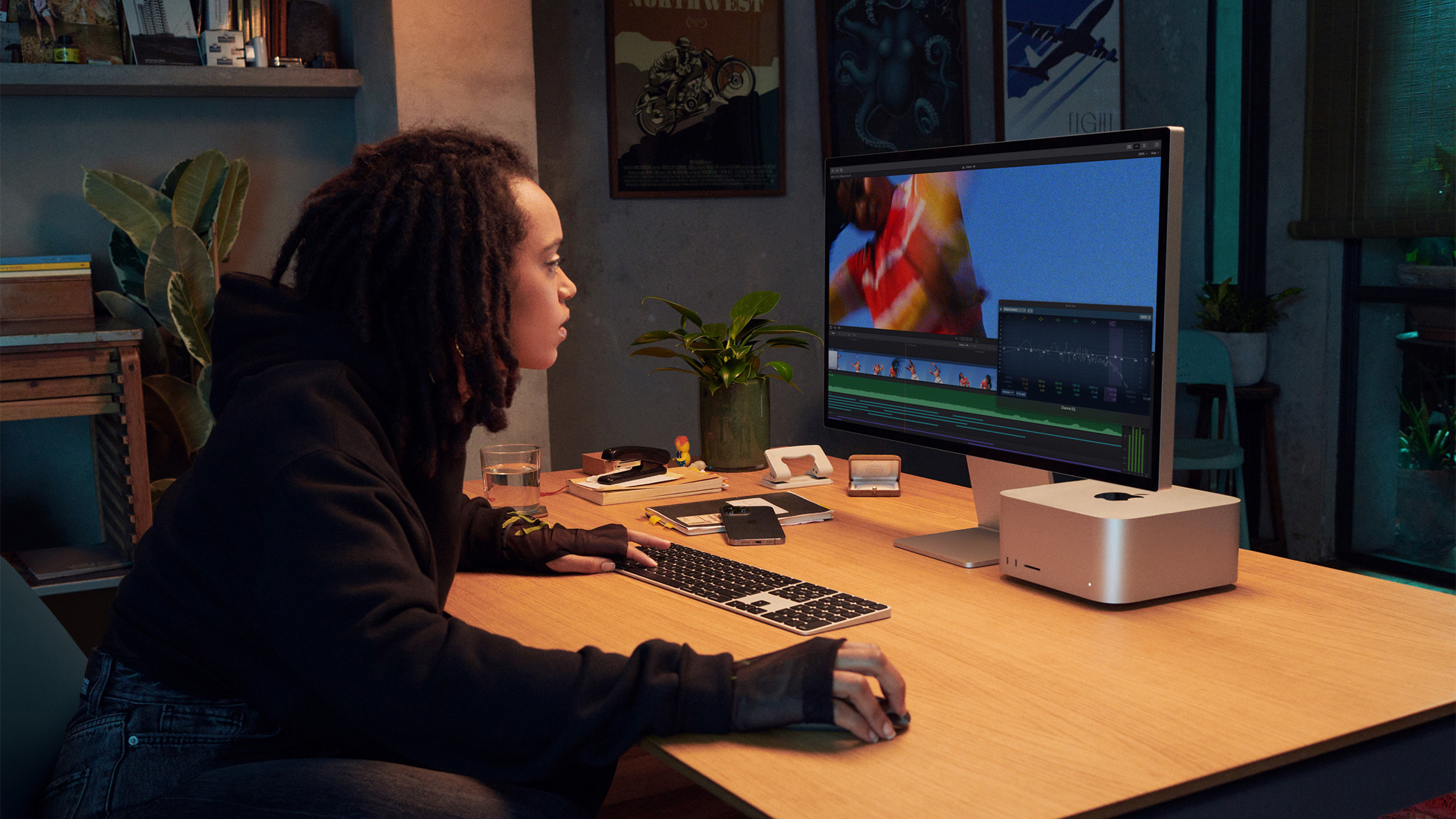The Apple Studio Display would be a bargain for Mac fans with this one change
Apple's new monitor has a computer in it… so why isn't it an iMac?


The new Apple Studio Display is a gorgeous piece of it: a 27-inch monitor with super-detailed 5120x2880 5K resolution, 600 nits of brightness and P3 wide colour gamut support.
Interestingly, it even has an Apple A13 processor inside, to help make some of its smarter functions work, including True Tone colour adjustment, a Centre Stage webcam, which can follow you around the room if you move, and 3D audio processing for its elaborate speaker system.
The thing is, all of these features make it pretty damn pricey: it's $1,599/£1,499/AU$2,499. That's not unreasonable for a really good pro monitor, which is what this is – "Studio" seems to be Apple's new branding for certain pro products – but it's tough for a lot of the rest of us to justify it.
Except it could have looked a bargain at that price with one change – and it's a very small change! Though it's also a very big change, at the same time, admittedly.
I first had this thought after a tweet from developer Steve Troughton-Smith, pointing out just how powerful the A13 is considering its limited uses.
The Apple Studio Display has a more powerful CPU than the Apple Silicon DTK from less than two years ago 👀 It could literally run macOS by itselfMarch 11, 2022
Now, I believe Troughton-Smith is actually mistaken in his tweet – the original Apple Silicon DTK (the first test device) used an A12Z chip, which was 8 processor cores and 8 GPU cores, both of which outnumber those used in the A13 – but the principle is right.
So it gave me a thought that could totally redefine the value of this machine: What if instead of that Apple A13 processor it had an Apple M1 processor? And, as Troughton-Smith suggests, ran macOS?
Get all the latest news, reviews, deals and buying guides on gorgeous tech, home and active products from the T3 experts
I say this is a small change, because even though the M1 is a lot more powerful than the A13, it doesn't seem to be much harder to accommodate. Take the new iPad Air 5, for example – it just went from using the Apple A14 chip to the Apple M1, and didn't make any external changes. Same thickness, no fans required, same price as before… but now with all that power.
And It's also worth noting that the Apple Studio Display is actually thicker than the iMac 24-inch (2021) that uses the M1 – so lack of space or difficulty in engineering doesn't look to be a massive issue for fitting an M1 into something the size of the Studio Display.
The cost shouldn't be a barrier either – the M1 is surely more expensive to make than the older A13, but the cost to Apple per unit of this upgrade would maybe be in the tens of dollars, based on supply chain estimates.
Even so, let's give Apple the benefit of adding $100/£100/AU$150 to the price to give us the privilege of using the M1.
That brings the price to $1,699/£1,599/AU$2,649. For a fast computer with a world-class display. Suddenly, it looks like a pretty good deal – it's a little more expensive than the iMac 24-inch, and considering you get a larger and brighter screen, that's exactly what you expect.

Of course, I've turned it into a totally different machine at this point, haven't I, which misses the point of a display? Except, I haven't. I've barely changed anything physically. And if it were possible for Apple to make it run in either a display mode or a Mac mode (some iMacs used to have this option, years ago), then it could be the best of both worlds.
People who are spending thousands on the new Mac Studio wouldn't be put off by a slight price hike on the display, even if they won't use its built-in Mac powers.
But for people like me, who would choose a larger iMac than the 24-inch if one was offered (Apple told Ars Technica that the 27-inch iMac has reached "end of life"), it would be an ideal machine. Instead, if I want this size of screen from Apple, I need to spend this much on the Studio Display, and then another big chunk on a Mac Mini.
Apple, you're already putting a chip in the Studio Display. Why not just juice it up further and then let it off the chain, rather than having me pay for two different loads of silicon to do the job of one?

Matt is T3's former AV and Smart Home Editor (UK), master of all things audiovisual, overseeing our TV, speakers and headphones coverage. He also covered smart home products and large appliances, as well as our toys and games articles. He's can explain both what Dolby Vision IQ is and why the Lego you're building doesn't fit together the way the instructions say, so is truly invaluable. Matt has worked for tech publications for over 10 years, in print and online, including running T3's print magazine and launching its most recent redesign. He's also contributed to a huge number of tech and gaming titles over the years. Say hello if you see him roaming the halls at CES, IFA or Toy Fair. Matt now works for our sister title TechRadar.